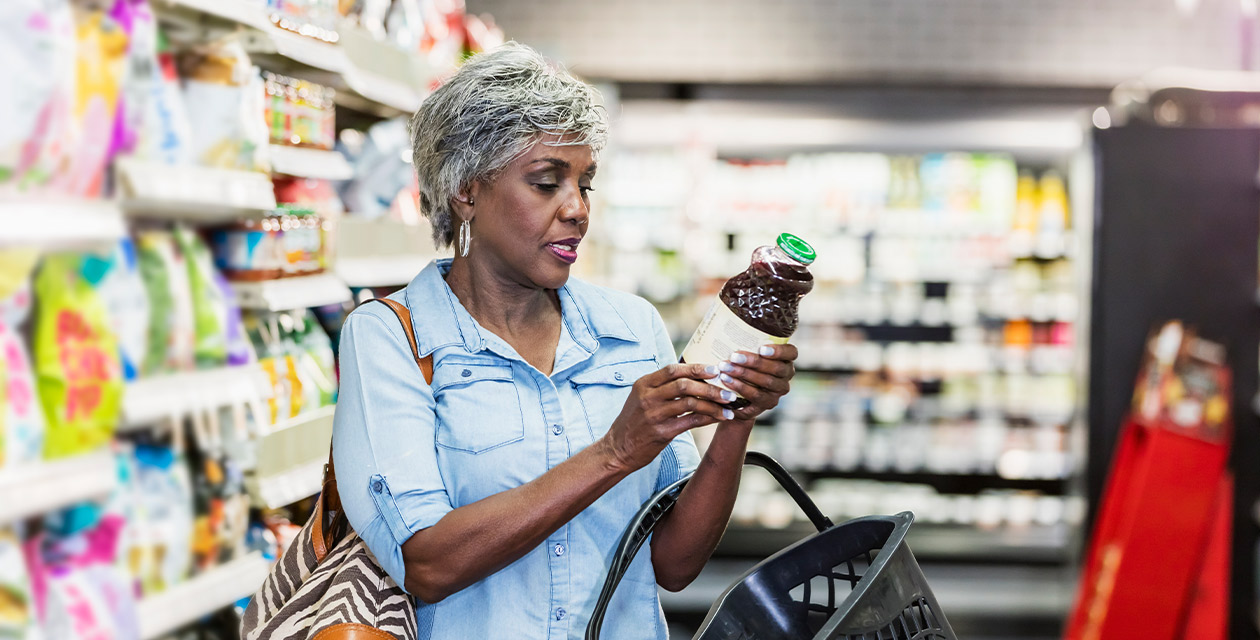Browsing the grocery aisle virtually or in-store, there are several factors we want to know before tossing items into our cart. Product information such as the ingredients, where it is made, sustainability, allergy concerns, and health benefits can be considered more important than the price. This is especially true for the younger generations who are more health-conscious and interested in sustainability. People want to trust what they are buying and who they are buying it from.

Transparency From the Consumer Perspective
In the manufacturing industry, brand transparency and product transparency are pathways to creating consumer trust. According to a label insight study of over 2,000 customers, 94 percent of people are more likely to stay loyal to brands that are completely transparent, and 73 percent would pay more for a product if it was completely transparent. The study dove into the buying preferences and habits of consumers who shop in-store and online. Two of the key findings include:
- Shoppers have high transparency expectations when shopping online compared to when shopping in a store.
- Shoppers are highly focused on purchasing products that meet their health and wellness needs and are often finding it difficult to shop online and meet those needs.
One reason the online shopping experience is not meeting expectations has to do with instant gratification. In-store shopping is more rewarding because consumers can instantly see and read the entire package for labels, scan ingredients, and if they’re lucky, actually taste a product sample. Online shoppers cannot see or touch a product as they can on a store shelf, so it’s important to convey the ingredients, benefits, and sensory perceptions (how it tastes, looks, feels, and smells) on social media posts and product pages. The good news about enriching your brand website with product information is there are fewer space constraints and more room for storytelling compared to product packaging.
Psychology of Package Labels
A rising number of consumers are seeking out products with transparent labels and that are packaged simply. Caroline Werle, associate professor at Grenoble Ecole de Management, conducted research on the psychology of labeling and found the simpler the label, the more impact it had on the customer’s perceived enjoyment of the product. Labels such as “local” or “low-fat organic” increase perceptions of healthiness. Although it is tempting to use labels to infer healthiness, companies should always be careful about misleading the buying public. Popular chocolate spread Nutella became the subject of a lawsuit after posting the word “wholesome” on its product label—an allusion to a healthy product when in fact, it contains high levels of sugar and salt.
The Difference Between Product Labels & Certifications
A label can be any claim made on a food and beverage product, whether regulated by a government agency or not. A certification is a label that can only be applied if the product meets certain standards set and regulated by an agency such as the Food and Drug Administration (FDA), the United States Department of Agriculture (USDA), non-profit groups, or third-party testing agencies. It is important to note that all certifications are labels but not all labels are certifications.
Examples of certifications regulated by the USDA include:
- Organic
- Hormone- and Antibiotic-Free
- Grass-Fed
- Free-Range
- Cage-Free
Terms such as “Non-GMO,” “Whole Grain,” “Multi-Grain,” and “Pasture-Raised” are not certified by the USDA.
The Clean Label Movement
A byproduct of the health and wellness trend, “clean” products are defined as using as few ingredients as possible, and with recognizable ingredients, consumers might use it at home. Clean-label food and beverage products are made with any chemical additives or artificial sweeteners, a challenge when it comes to eating healthier without sacrificing shelf life or taste. Clean labels include a wide variety of ambiguous terms like “simple,” “locally grown,” “humane,” and “all-natural”—all of which are equated with wholesomeness, rather than scientific evidence for substantiation.
In a global study of clean label foods, Ingredion found that after the price of an item, consumers place significant value on the ingredients list, preferring to seek products free-from artificial ingredients and additives. The most accepted ingredients include natural colors, natural flavors, vegetable oil, flour, and sugar. According to the study, 82 percent of U.S. consumers believe it’s important to recognize the ingredients found in the foods and beverages they buy (an increase from 66 percent in 2011).
Trending Food Label Buzzwords
When it comes to product labels, there are many terms perceived as simple and added value. These are 20 food buzzwords consumers categorize as most desirable when identifying with food and beverage products.
- Organic
- All-Natural
- Superfood
- Probiotic
- Non-GMO
- Gluten-Free
- Cage-Free
- Grass-Fed
- Omega-3
- Whole Grain
- Whole Wheat
- Collagen
- Antioxidant
- Vegan
- Plant-based
- Fermented
- Low/Light
- Reduced/Free
- Sugar-Free
- Keto
Product transparency is important for a brand’s long-term success. Consumers will find your product if clear and easily identifiable ingredients, certifications, and labels are posted on your product packaging, social media sites, and online product pages. Find out how Alliance can make your CPG product more transparent and optimize its success.

